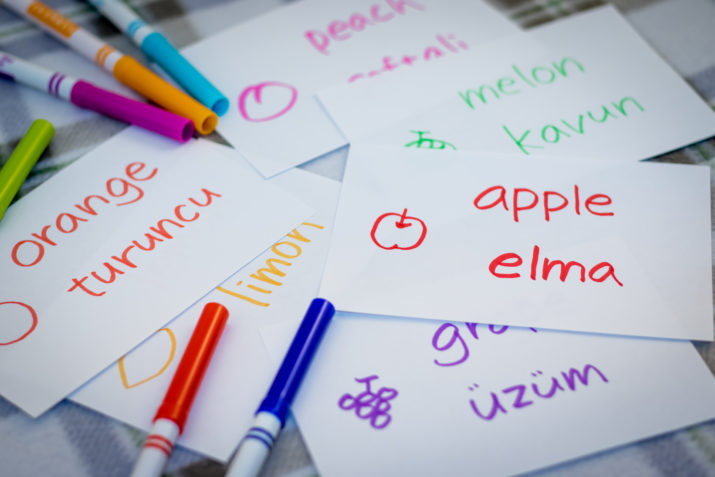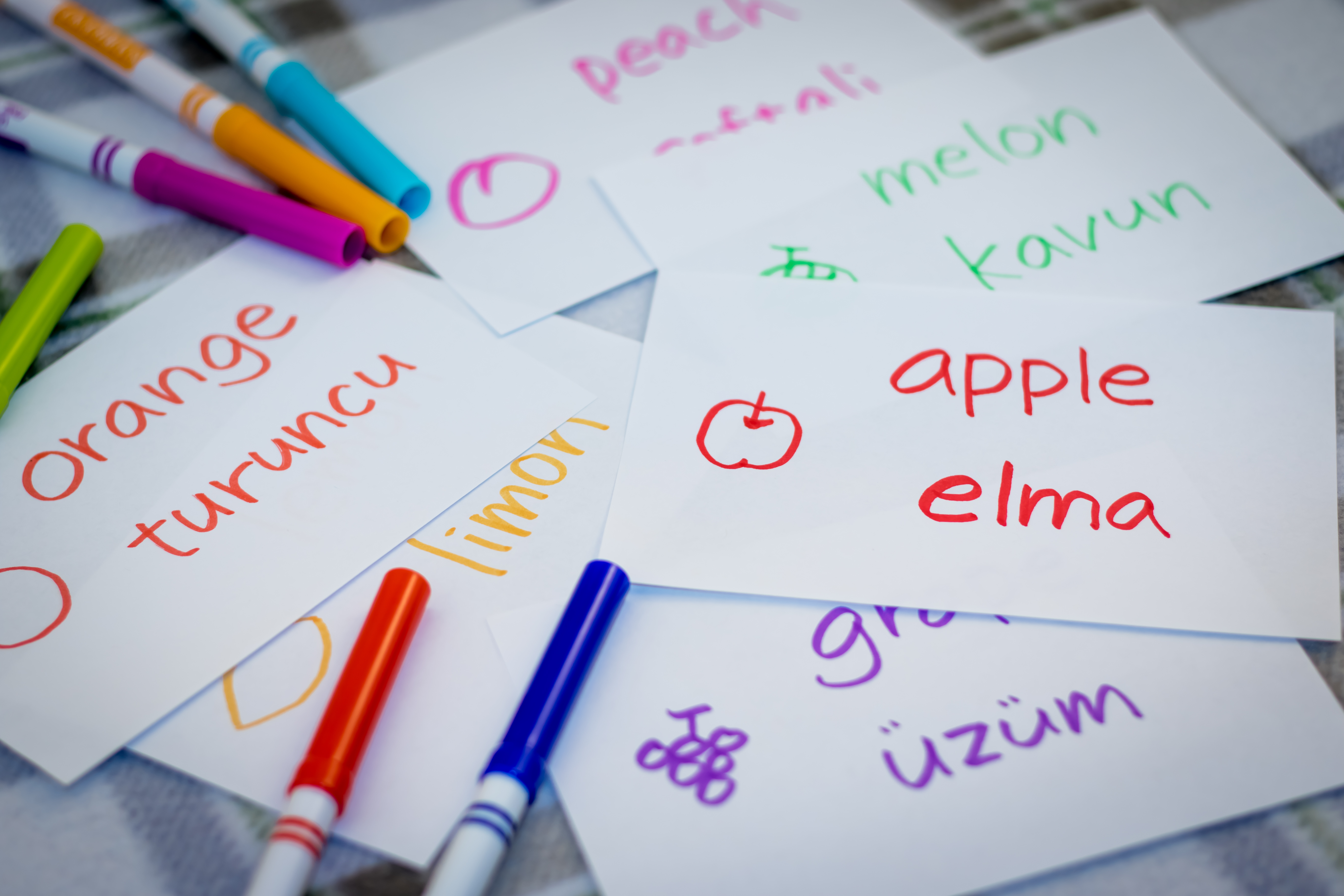

This is part of our special feature on Anxiety Culture.
Anxiety is a foreseeable aspect of the parenting experience. Fears about the uncertain, yet greatly anticipated, future of one’s offspring are spurred by questions on how to, for example, facilitate lifelong emotional stability or career and economic success. Ensuring the lives of their children are, in most cases, better than their own, is at the center of parents’ concerns. Most parents, in fact, are often preoccupied about future decisions for a place to live away from the family home, education, or leisure activities among others.
Anxieties related to the parenting experience for migrant families are complicated by multiple factors, some of which are perceived as being life-threatening, and thus, at times, prioritized over any others (e.g., making a living, finding a home, having someone to care for their children, paying their bills, or avoiding police prosecution, among others). While one of these important factors is selecting an appropriate educational pathway, among the offerings the host society has for their descendants, the cultural and linguistic mismatch with the host society might deter, rather than promote, decision-making pathways and other healthy forms of parental involvement.
In the United States, for example, there are some pathways aimed at assisting migrant parents with engaging in education-related decision making for their children. However, while researchers have historically promoted parental involvement in schools to reduce alienation or antipathy (e.g., Delgado-Gaitan, 1991; Cummins, 1993), studies indicate that schools might have needs that differ from migrant family values, might hold diverging perspectives on the responsibilities for child rearing and development, or might want parents to be involved in ways which don’t reflect what is available to the families (e.g., using the internet as a primary form of communication; see Peña, 1998). As a result, parents might avoid contact with school that essentially might lead to confrontation which they believe will compromise their children’s education.
It is common for both first and second generation migrants to have goals and wishes regarding their children’s education that differ significantly from those of parents who have been in the host country for generations, as well as to experience higher level of barriers for school involvement (e.g., Ee, 2017; Pérez Carreón, Drake, & Barton, 2005; Turney & Kao, 2009). Moreover, linguistic minority parents have specific perceptions and concepts of multilingualism and multiculturalism, which they are eager to transmit to their descendants in the hope of assisting them to best cope with the novel and complex situations in the foreign host society, and in their educational systems. In particular, parents might center their efforts on finding the balance between striving to adapt to the culture of their host country on the one hand and remaining strongly rooted in their own unique culture and tradition.
One of the difficult decisions migrant parents are confronted with as their children enter education systems in the host country is the kind of language support their children should receive. While choosing bilingual programs for their children’s education, parents’ anxieties will include worrying about ensuring language proficiency in English for their children.
Migrant parents who come from non-English backgrounds understand learning English as being a key condition to social and economic achievement, and at the same time, they strongly value maintaining the heritage language as the pivotal link to their own family and culture. However, even though there is evidence to the contrary, some professionals and families might believe that exposure to two languages might result in language delays or learning problems (e.g., King, 2013; King & Fogle, 2006; Okita, 2001). External pressures and misguided beliefs and recommendations from well-intentioned practitioners and/or relatives impact parental decisions about their children’s education, and might result in subtractive bilingual school and home linguistic practices. Subtractive bilingualism refers to processes through which the first language development is compromised as a new language, which in the United States, among other countries, is English, is privileged (Cummins, 1994).
Thus, while the unavoidable social tension between the desire for rootedness and the urge to adapt to the new social demands finds a supposedly peacemaking solution in bilingual education, bilingual offerings in host countries raise new problems (e.g., disparate parental involvement understandings, the proclivity for subtractive bilingualism processes, or concerns about English language as well as content learning). There is, in spite of all debates about practical aspects, a widely accepted belief that developing specific education programs for migrant communities is relevant and needed. Bilingual education offers one approach for migrant parents to select for their children’s education.
Bilingual Education Programs
The vast majority of bilingual education programs in the U.S. are anchored in elementary schools and can be categorized as TBE (Transitional Bilingual Education), an issue which has its roots in historical efforts to remediate migrants’ lack of English (e.g., Lee, 1999). On the contrary, dual language bilingual programs (DLB), which aim to serve students who speak a language other than English in the home, as well as those who would like to learn a new language, aim to provide equal educational opportunities leading to additive bilingual processes for all (Peña, 1998).
In both contexts, content is taught in the first language (in the U.S., mainly to members of Spanish-speaking communities), while, at the same time, these students are given the opportunity to develop their English skills in additional language classes. In doing so, they are increasingly being taught English in more and more subjects (a process that varies by program and from student to student).
The main difference between these two primary forms of bilingual education relies on what happens after the child has learned enough English to learn content in school. In TBE, students will, at that time, transfer to English only contexts where they will learn together with English native speakers. While TBE poses some benefits, such as positive correlation between the level of reading competence in both of a child’s languages (Gardener 2013), the sole aim of this bilingual model is to learn the English language, which potentially leads to assimilation, and home language loss (Gándara & Escamilla, 2017).
Over the past two decades DLB, which seek to promote bilingualism and biliteracy as well as transculturality, has been highlighted as a more beneficial approach to the education of migrant children. Research indicates that DLB education poses multiple benefits for migrant communities (e.g., higher levels of bilingual proficiency, better chances of being reclassified as being English proficient, or particular learning strengths; August & Shanahan, 2006; Collier & Thomas, 2004; Lindholm-Leary & Genesee, 2010; Umansky & Reardon, 2014; Bialystok, 2010), and yet its effectiveness and economic efficiency continues to be constantly questioned until today (Lee, 1999).
At the same time, DLB programs, the majority of which are implemented at the elementary school level with fewer options as students get older, maintain the provision of instruction in two languages at least throughout the entire elementary schooling experience and are thus described as being additive – all students speak in two languages and study in two languages (Gándara & Escamilla, 2013).
Despite the existing scientific evidence on the multiple benefits DLB programs offer for migrant children, one important aspect to take into account is the role migrant parents play in making the decision to have their children join a DLB program, in lieu of any other offer in the educational system of the host country. While oftentimes the decision not to join a DLB program is merely made based on lack of offers around the home, there are many other options that impact parents in deciding the best language program for their children (e.g., Peña, 1998).
Even if the implementation of DLB programs is largely driven by findings of theoretic research as well as empirical investigation based on teaching practices in school, the parents’ choice is eventually taken according to what they and their children as migrants actually think and what kind of worries and fears they do have with regard to the prevailing schooling routines. From the parents’ side, there is a constant concern, and even anxiety, to reassure that their children will maintain the family’s cultural identity and social binding with the original home, sometimes including the intent to keep them as an active part of a segregated living environment in the host society (Worthy & Rodríguez-Galindo, 2006).
Thus, uncertainty, and even fear, also serve as a basis for decisions regarding schooling, and the lasting conflict that stems from leading a life between two worlds, very often determines on the upcoming decisions, which are ultimately guided by personal visions on the best perspectives for the own children’s lives (Sánchez-Suzuki Colegrove & Krause, 2017). For us, as researchers who work with migrant families and communities, both in New York City (United States) and in Germany (Europe), the question of whether our concepts of bilingual education can assist families in relieving, to a certain extent, their anxieties in relation to the tension between integration and assimilation is an important one. Specifically, we wonder how these anxieties vary across these two contexts and how the integration-assimilation tension is relieved or, rather, galvanized as their children experience the linguistic educational programs they chose for their elementary schooling.
We see the need to explore whether the concrete fears associated with multilingual and multicultural education are somewhat addressed and parents’ educational hopes and anxieties for their children is fulfilled. This essay has served as an initial exploration of the framework that could help us in exploring the anxiety-provoking issue of migrant parents’ decision-making in relation to educational aspirations for their children, as they arrive to a new country.
Parental Anxiety for Their Children’s Education
Most bilingual education studies are related to the students’ learning and short-term outcomes, or they focus on the discussion about the teaching models, in terms of language distribution, for instance, or address the sequential stages of linguistic competence.
Although parents are not often at the center of research endeavors, there is some work that addresses migrant parents as relevant agents in this special educational context. Peña (1998), for example, shows the importance of keeping parents’ initial commitment beyond the initial phases of schooling. Most studies, though, deal with the attitudes of parents towards bilingual education programs. For example, in an early study on parental perception of bilingual education, Lee (1999) explored parents’ familiarity with bilingual education and its goals, as well as their level of endorsement for these programs. Shockingly, the researcher found that parents were largely unaware about the functionality and purpose of bilingual programs. Parental resistance to bilingual education is often related to their anxiety in relation to potential segregation for their children, which results in opting early on for English-only classes (Lee, 1999).
Additional studies analyze parental fears about children’s home language loss as they enter school. Worthy and Rodríguez-Galindo (2010) explored parental perceptions of the importance of bilingualism and biculturalism for their children’s lives. While resistance against the prevailing assimilation pressure is found in these studies, the importance of English proficiency surfaces as well as an essential source of anxiety and worry for migrant families. In a recent study, Sánchez-Suzuki and Krause (2017) point out the importance of attending to the interaction between school and migrant families. The misperception that migrant parents do not want to be involved in their children’s education, or do not have the time, is often rooted in the limited options for action for parents who do not match the majority culture the schools offer.
These studies confirm that the most relevant anxiety categories of parents with regard to their children’s education is connected to (1) the impending loss of the migrants’ own language and culture, (2) the lack of linguistic proficiency in English, and (3) the consequences of socio-political assimilation pressures. At the same time, it has been shown that the parents’ attitude and commitment, as well as their insight in the intentions and patterns of the bilingual education programs, are crucial factors of educational success.
Based on these findings, we would like to propose new directions for future research.
Directions for Future Research
We propose to address the question of how the anxieties of migrant parents evolve as they make decisions in relation to their children’s linguistic education. This research will be guided by the following subquestions: do bilingual programs offer an effective tool to help migrant parents solve some of their anxieties in relation to their children’s education? Which instruments can be used to study this question? How can migrant parents’ anxieties be addressed more effectively in education? What needs to be done in terms of teacher preparation to address migrant parents’ anxieties?
We would like to propose interviews that will be conducted with parents of students learning in bilingual education programs. Questions would explore the motivation behind their choices of bilingual education for their children, as well as their expectations, fears and hesitations associated with this decision. Narrative interviews providing detailed statements about the concepts to be studied will be used followed by thematic analysis. We would like to interview the same parents twice so that we can capture their evolving ideas in relation to their decision to join bilingual education. In addition, we would like to conduct expert interviews with teachers and other stakeholders responsible for the bilingual programs. This data will be used to triangulate findings. In addition, the school curricula would be examined to see if they adequately capture the objectives and goals for working with parents, thus contributing to lessening the anxiety levels of the parents.
Cultural Historical Activity Theory (CHAT), originally founded by Lev Vygotsky (1978), seems particularly well suited to understanding and analyzing complex and interdependent learning systems (Yamagata-Lynch, 2010). CHAT is based on three central ideas: First, the assumption that people act as groups, that they learn in practice and communicate about their actions. Then, as social actors, people have very different tools and strategies to learn and communicate. Last, but not least, the collective plays a crucial role in opinion construction and interpretation (Foot, 2014). The central task of a CHAT analysis is to capture the entirety of an activity and to not split it into its individual parts. This allows the exploration of numerous relationships and interdependencies within a complex activity system, both in a snapshot and in terms of its evolution over a longer period of time. For our research, CHAT provides a suitable theoretical framework as it focuses on the interpersonal, communicative aspects of the relationship between experts and clients, in our case, the representatives and creators of bilingual education programs (teachers and stakeholders) and parents.
On the other hand, it does not lose sight of the cultural, historical, political, and economic dimensions. Although originally intended and used primarily for other areas, there are already successful experiences of working with CHAT in school contexts (Nussbaumer, 2011). In our study, CHAT will lead us to explore the matching of bilingual educational programs to essential migrant anxieties in the context of education and with regard to the future of their children.
Conclusions
We would like to propose that future research centers on exploring the anxieties that migrant parents experience as they are confronted with difficult decisions around linguistic educational choices for their children in the host country. While we realize that linguistic anxiety and its relationship to language learning has so far been neglected by studies in second-language or foreign-language learning (Sevinç & Backus 2017), in reference to the anxieties of parents, we have decided not to include this factor in this particular analysis.
We hope to use what we have learned working in this essay in our future work to collect data through surveys and in-depth interviews, alongside focus groups from migrant parents who are dealing with difficult linguistic education choices for their children. Such study will assist our understanding of how, and if, bilingual education assists migrant parents in the difficult endeavor of achieving, as described by Gloria Anzaldúa (2002), an “in-between” state where integration and assimilation are equally weighed as they achieve a “nosotros” (us), rather than remaining in the original “nos-otros” (us-others).
Bàrbara Roviró graduated in 2001 from the program in Philology of Romance Languages, Political Sciences and Education Sciences at the University of Münster, Germany. She worked for a several years as a High School Teacher in Spanish and Politics and currently, she is a teacher educator in the Department of Literatures and Languages in the fields of Language Acquisition and Romance Languages as Foreign Languages at the University of Bremen. Bàrbara Roviró has been a visiting scholar in the Program in Bilingual/Bicultural Education at Teachers College, Columbia University in New York City. Her doctoral studies investigate questions of identity building in relation to language use in migration processes. She is also interested in studying theories and methods of second and foreign language acquisition, the multilingual classroom, cultural studies, and film education in the foreign language classroom.
Patricia Martínez-Álvarez is an Assistant Professor of Bilingual/Bicultural Education in the Department of Arts and Humanities at Teachers College. She obtained her Ph.D. in Instructional Technology and Multilingual/Multicultural Special Education from George Mason University, and her master’s degree in Bilingual Special Education from George Washington University. Her research aims at identifying the contextual and child-level factors that promote language, literacy, and content development with bilingual children with disabilities, as well as the preparation of teachers for the inclusive bilingual special education classroom. A long time bilingual special education teacher, Dr. Martínez-Álvarez’ work assists in developing awareness of the rich resources bilinguals bring to school. Her work has been published in journals such as the Journal of Teacher Education, the Bilingual Research Journal, the International Journal of Bilingual Education and Bilingualism, or the journal Curriculum Inquiry.
Photo: Turkish; Learning New Language with Fruits Name Flash Cards
References:
Anzaldúa, G. (2002). Now let us shift … the path of conocimiento … inner work, public acts. In E. Anzaldúa & A. Keating (Eds.), This bridge we call home: Radical visions for transformation (pp. 540-578). New York, NY: Routledge.
August, D., & Shanahan, T. (2006). Developing Literacy in Second-Language Learners: Report of the National Literacy Panel on Language Minority Children and Youth. Mahwah, NJ: Lawrence Erlbaum Associates.
Bialystok, E. (2010). Global-local and trail-making tasks by monolingual and bilingual children: Beyond inhibition. Developmental Psychology, 46(1), 93-105.
Delgado-Gaitan, C. (1991). Involving parents in the schools: A process of empowerment. American Journal of Education, 100(1),20-46.
Collier, V.P., & Thomas, W. P. (2004). The astounding effectiveness of dual language education for all. NABE Journal of Research and Practice, 2(1), 1-20.
Cummins, J. (1994) The Acquisition of English as a Second Language, in Spangenberg-Urbschat, and Pritchard, R. (eds) Reading Instruction for ESL Students. Delaware: International Reading Association.
Cummins,1. (1993). Bilingual education and English immersion: The Ramirez report in theoretical perspective. Bilingual Research Journal, 16(1-2), 91-104.
Ee, J. (2017) Two dimensions of parental involvement: What affects parental involvement in dual language immersion? Bilingual Research Journal, 40(2), 131-153.
Gándara, P., & Escamilla, K. (2017). Bilingual education in the United States. In O. García , A.
Lin, & S. May (Eds.), Bilingual and multilingual education (pp. 439-452). New York City, NY: Springer International Publishing.
Goldenberg, C. (2013). Unlocking the research on English learners, what we know – and don’t yet know–about effective instruction. American Educator, 37(2), 4-11.
King, K. A. (2013) A tale of three sisters: Language ideologies, identities, and negotiations in a bilingual, transnational family. International Multilingual Research Journal, 7(1), 49-65.
King, K. A., & Fogle, L. (2006). Bilingual parenting as good parenting: Parents’ perspectives on family language policy for additive bilingualism. International Journal of Bilingual Education and Bilingualism, 9(6), 695-712.
Lee, S. K. (1999). The linguistic minority parents’ perceptions of bilingual education. Bilingual Research Journal, 23(2-3), 199-210.
Lindholm-Leary, K., & Genesee, F. (2010). Alternative educational programs for English language learners. In California Department of Education (Ed.), Improving education for English learners: Research-based approaches (pp. 323-382). Sacramento: CDE Press.
Nussbaumer, D. (2011). An overview of cultural historical activity theory (CHAT) use in classroom research 2000 to 2009, Educational Review, 64(1), 37-55.
Okita, T. (2001). Invisible work: Bilingualism, language choice and childrearing in intermarried families. Philadelphia, PA: John Benjamins.
Peña, R.A. (1998). A case study of parental involvement in a conversion from transitional to dual language instruction. Bilingual Research Journal, 22(2-4), 237-259.
Pérez Carreón, G., Drake, C., & Barton, A. C. (2005). The importance of presence: Immigrant parents’ school engagement experiences. American Educational Research Journal, 42(3),
465-498.
Sánchez-Suzuki Colegrove, K., & Krause, G. H. (2017). “Lo hacen tan complicado”: Bridging the perspectives and expectations of mathematics instruction of Latino immigrant parents. Bilingual Research Journal, 40(2), 187-204.
Sevinç, Y., & Backus, A. (2017). Anxiety, language use and linguistic competence in an immigrant context: a vicious circle? International Journal of Bilingual Education and Bilingualism. Retrieved from https://www.tandfonline.com/doi/abs/10.1080/13670050.2017.1306021
Turney, K., & Kao, G. (2009). Barriers to school involvement: Are immigrant parents disadvantaged? The Journal of Educational Research, 102(4), 257-271.
Umansky, I., & Reardon, S. F. (2014). Reclassification patterns among Latino English learner students in bilingual, dual immersion, and English immersion classrooms. American Educational Research Journal, 51(5), 879-912.
Yamagata-Lynch, L.C. (2010). Activity systems analysis methods: Understanding complex learning environments. New York City, NY: Springer International Publishing.
Worthy, J., & Rodríguez-Galindo, A. (2006) “Mi hija vale dos personas”: Latino immigrant parents’ perspectives about their children’s bilingualism. Bilingual Research Journal, 30(2), 579-601.
Published on July 2, 2018.




